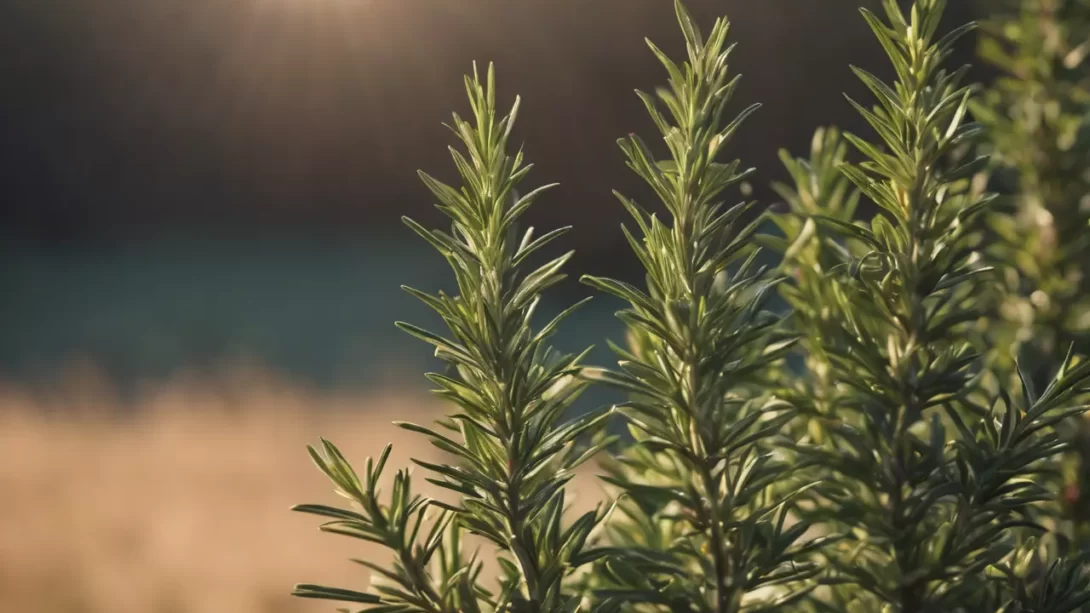Rosemary, a herb revered for its culinary and aromatic qualities, holds a special place in kitchens and gardens around the world. Its distinct fragrance is as integral to its identity as its flavor. This article aims to delve into the unique aroma of rosemary, offering a sensory guide to its olfactory profile and the factors that influence it.
Botanical Profile of Rosemary
Rosemary (Rosmarinus officinalis), a member of the mint family Lamiaceae, is native to the Mediterranean region. It’s characterized by its needle-like leaves, woody stems, and ability to thrive in warm, sunny climates. The herb’s hardy nature allows it to flourish in a variety of environments. The oils within rosemary leaves, responsible for its distinctive scent, are concentrated in small glandular hairs on the leaf surface.
Characteristics of Rosemary’s Scent
Rosemary’s scent is often described as strongly aromatic, with woody, evergreen notes reminiscent of pine. It also carries subtle undertones of citrus and lavender, contributing to its refreshing and invigorating quality. Unlike other herbs that may have a softer, floral aroma, rosemary’s fragrance is robust and lingering, often associated with cleanliness and freshness.
Comparison with Other Aromas
In comparison to other herbs, rosemary’s scent is more potent and resinous. While herbs like thyme and oregano also have earthy tones, rosemary’s pine-like quality sets it apart. Its invigorating fragrance can be likened to eucalyptus or mint, though with a distinctively Mediterranean warmth and complexity.
Factors Influencing Rosemary’s Aroma
Several factors can affect the intensity and quality of rosemary’s aroma. The growing environment, including soil type and climate, plays a significant role. Rosemary grown in its native Mediterranean climate, with ample sunlight and well-drained soil, typically develops a stronger scent. Additionally, the age of the plant and the time of harvesting can influence its aromatic oils. Younger rosemary leaves tend to have a fresher, more vibrant scent, while older leaves may have a deeper, woodier aroma.
Culinary Uses and Aromatic Applications
In the culinary world, rosemary is celebrated not only for its flavor but also for the aromatic depth it adds to dishes. The herb’s robust scent enhances a wide range of recipes, from roasted meats and vegetables to breads and soups. As it cooks, rosemary releases its oils, infusing the dish with its distinctive aroma. This characteristic makes it a favored herb in Mediterranean cuisine, where it complements olive oil and garlic flavors.
Beyond cooking, rosemary’s fragrance finds its way into aromatherapy and perfumery. Its essential oil is believed to have various therapeutic properties, including improving concentration and relieving stress. The scent of rosemary is also used in candles, room sprays, and natural cleaning products, valued for its refreshing and purifying qualities.
Varieties of Rosemary and Their Scents
There are several varieties of rosemary, each with its unique aromatic profile. For instance, ‘Tuscan Blue’ rosemary boasts a classic, strong pine-like fragrance, while ‘Salem’ rosemary has a more subtle, slightly lemony scent. ‘Miss Jessopp’s Upright’ rosemary is known for its sharp and pungent aroma, making it ideal for culinary use. The diversity in scents among different varieties allows for tailored use in both cooking and aromatic applications.
The Role of Rosemary in Culture and History
Rosemary’s scent has played a significant role in cultural traditions and history. In ancient times, it was associated with memory and fidelity, often used in wedding ceremonies. Its fragrance was believed to ward off evil spirits and was used in various rituals and medicinal practices. In folklore, rosemary is a symbol of remembrance, a tradition that continues in some cultures today.
Conclusion
Rosemary’s distinctive aroma is an integral part of its identity and appeal. This robust and versatile herb, with its woody, evergreen scent accented by notes of citrus and lavender, plays a significant role in both culinary and aromatic spheres. Its potent fragrance enhances a wide array of dishes, infusing them with a depth of flavor that is quintessentially Mediterranean. Beyond the kitchen, the invigorating scent of rosemary finds its place in aromatherapy, perfumery, and various household products, valued for its refreshing and purifying properties.
The variety of rosemary types, each with its unique aromatic profile, offers a spectrum of scents suitable for different uses and preferences. This diversity not only caters to the culinary artist but also to the aromatherapist and the home gardener, making rosemary a versatile choice for various applications.
Moreover, the historical and cultural significance of rosemary’s scent enriches its value. From ancient rituals to modern-day ceremonies, its fragrance has been a symbol of remembrance, love, and protection. This enduring legacy underscores the timeless appeal of rosemary and its continued relevance in contemporary life.
In summary, rosemary’s aroma is more than just a pleasant scent; it is a fusion of history, culture, and nature. Whether used in cooking, therapy, or simply enjoyed in a garden, rosemary’s fragrance continues to captivate and enrich our sensory experiences. Its enduring popularity is a testament to the multifaceted roles it plays in our lives, making rosemary a cherished herb in various traditions and practices.



